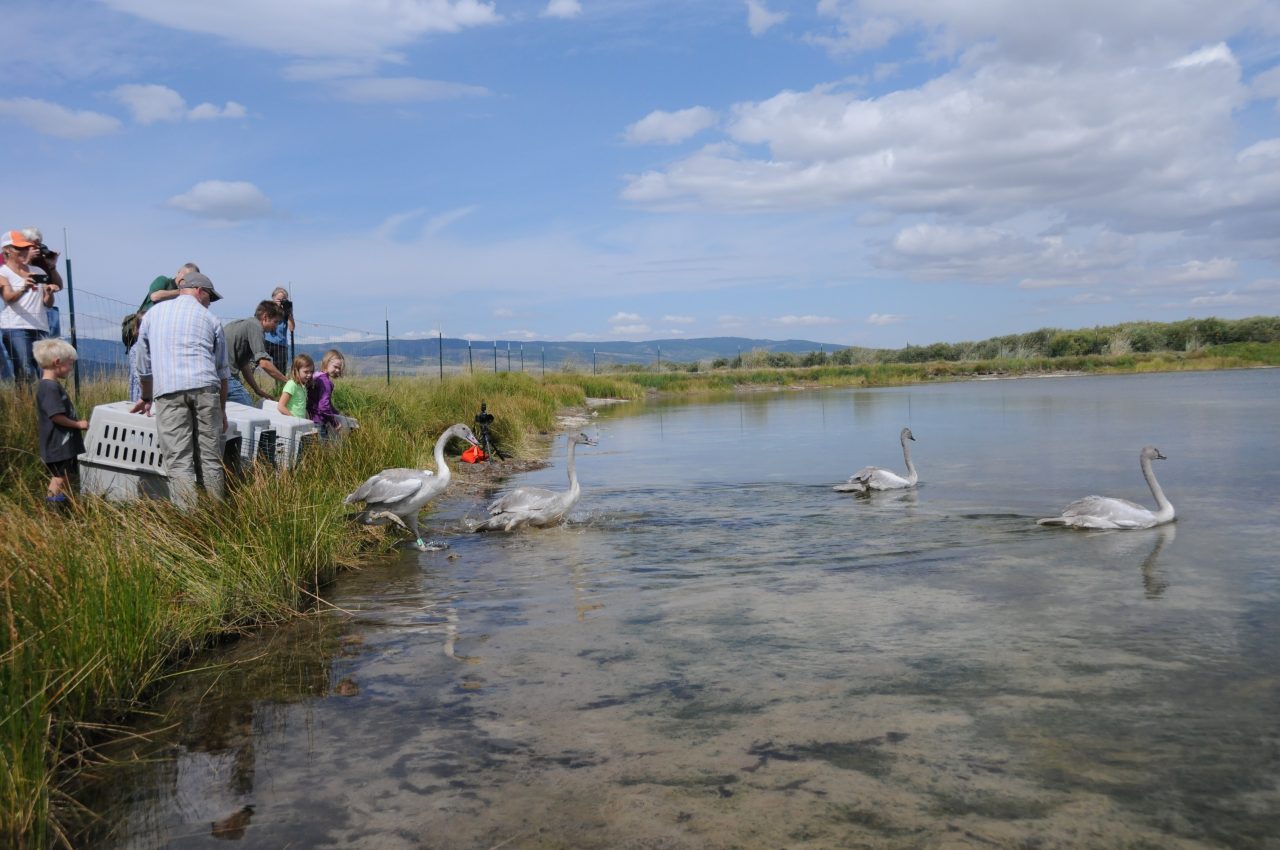Teton Regional Land Trust
Why Bird Conservation?
The Teton Regional Land Trust (TRLT) works to protect agricultural lands, which also serve as habitat for many species of wildlife, including bird species of conservation concern. Conservation Director Tamara Sperber refers to the lands as an umbrella, “by protecting property for agriculture, we help to protect bird habitat as well. I can’t think of any conservation project we’ve completed that hasn’t benefitted birds,” Sperber says.
The benefits to bird conservation and community outreach are immense, especially in an area with iconic bird species such as the Sandhill Crane and the Trumpeter Swan. Sperber credits these “large, charismatic species with the great public response” to their conservation efforts and outreach events. With birding tours, Sandhill Crane evenings, and a Trumpeter Swan release event, TRLT capitalizes on the opportunities that birds provide in educating the younger generation and instilling conservation values.
Spotlight Resource: North American Wetlands Conservation Act Grants
While the operations budget for TRLT is primarily funded through individual donors, the land trust has successfully secured millions of dollars of grant funds for bird conservation projects. For example, North American Wetlands Conservation Act (NAWCA) grants have helped to fund conservation of priority wetland-dependent bird habitat. Land conservation that benefits birds has also been possible through Farm Bill funding. However, Sperber laments the decrease in federal funds available for conservation, thus securing this grant funding has become more competitive. “Private fundraising is becoming more and more important. We are spending more time focusing on raising funds from private foundations and individuals than we have in the past,” says Sperber. These private funds are extremely important for matching and leveraging federal grant funding as well.

The Ins and Outs of Applying for Grants
Sperber says it takes a lot of staff time when researching, writing, and applying for funding such as a NAWCA grant, as there are many steps to complete a proposal. Luckily many of TRLT’s staff members have a science background, thus the land trust has relied on their knowledge and that of state and federal partners to provide the resources needed for these types of technical grants. First, wetland habitat for bird conservation must be prioritized. The Idaho Department of Fish and Game, the U.S. Fish and Wildlife Service, and others have developed conservation plans that outline priority areas at state, regional, and national levels. “Partnerships with organizations and agencies help to narrow our focus for NAWCA funds,” Sperber says. Since it takes dozens of hours to actually write the grant, TRLT will start about a year in advance working with landowners to line up conservation projects. Understanding the ins and outs of NAWCA grant applications is tricky, and Migratory Bird Joint Ventures can lend a hand. “Writing and administering the grants is a complex process,” said Sperber who credits the Intermountain West Joint Venture (IWJV) for helping TRLT by offering expertise and information to craft their competitive grant application. The IWJV has also provided funding to the land trust to increase their capacity to complete conservation projects that benefit high priority bird species.
Common Conservation Challenges
“Every land trust faces challenges,” says Sperber. “But, it has been especially difficult overcoming the downturn in the economy, decreasing land values, and fewer federal dollars allocated to land conservation.” As described earlier, TRLT is focused on overcoming some of these challenges by securing private funding and working with bird conservation projects, thus boosting TRLT’s fundraising efforts. Federal grants, such as NAWCA, that require matching funds are important to landscape-scale conservation and leverage private donations.
Productive Partnerships
“Partnerships are probably the most important thing to develop,” Sperber advises. For TRLT, much of the biological information used in grants comes from a variety of sources, including surveys done by the Idaho Department of Fish and Game, the U.S. Fish and Wildlife Service, non-governmental organizations, and even data collected by TRLT. The partners help each other in important ways, such as developing projects, restoring habitat, and securing funding. In addition to the tangible benefits of partnerships, NAWCA as well as many funding agencies, look for partnerships when awarding their grants. The resources from partners are key to pulling together a successful grant or conservation project.
Hero image: An overhead view of land conserved by the Teton Regional Land Trust. Photo credit: TRLT


